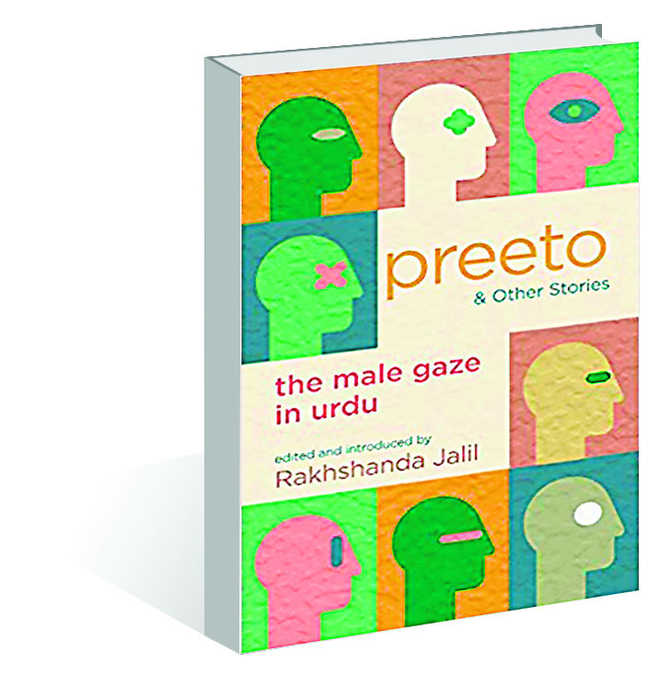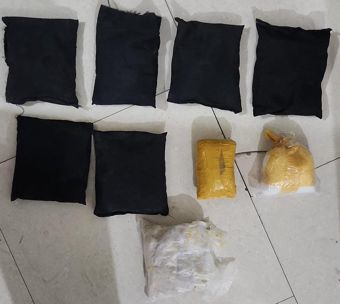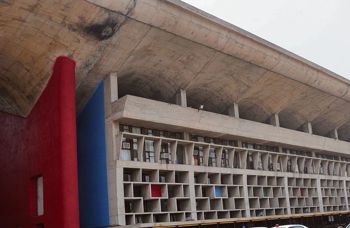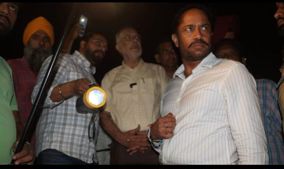
Preeto and Other Stories: The Male Gaze in Urdu ed by Rakhshanda Jalil. Niyogi. Pages 203. Rs 450
Renu Sud Sinha
It had always been there — looking at women, defining them or rather objectifying them through the prism of patriarchy. Yet, the ‘look’ found a definitive expression only in 1975 in feminist film critic Laura Mulvey’s now famous essay, Visual Pleasure and Narrative Cinema, as the term ‘male gaze’. It defines the heterosexual way of men looking at women as objects of sexual desire.
Not just in society, but even in art, literature, films, etc., the male gaze has always shaped the women characters. Ironically, at times, even feminine characters in writings of women writers have been moulded by this gaze.
Rakhshanda Jalil has threaded her present collection, Preeto and Other Stories: The Male Gaze in Urdu through the masculine eye — how do male writers portray women in their writings.
The anthology contains 13 stories by modern Urdu writers. The collection has its genesis in a couplet by Urdu poet, Majaz Lakhnawi, as Jalil explains in a comprehensive introduction:
Bataoon kya tujhe ai ham-nashin kis se mohabbat hai
Main jis duniya mein rehta hun woh iss duniya ki aurat hai...
(What shall I tell you my friend of the one I love She is woman of the world I live in)
That precisely is the premise and sentiment Jalil has attempted to capture in this book — of men seeing women as inhabitants of planet earth that they, too, cohabit. Women are not from Venus.
The extensive foreword makes it easier for readers, even those not quite familiar with Urdu literature, to connect with stories that follow from doyens of Urdu fiction to contemporary writers.
The collection begins with stories from two of four pillars of Urdu short story, Rajinder Singh Bedi and Krishan Chander (the other two being Saadat Hasan Manto and Ismat Chugtai). Woman by Bedi shows that even as a nurturer a woman remains an object of male desire. Faiyyaz Riffat’s Shonali, too, is in a similar vein.
The title story Preeto by Chander is a classic instance of male gaze. How the all-invasive gaze sees but never fathoms the deepest-most secrets of a woman’s heart. A woman never forgets and forgives, even after decades of living a seemingly blissful life, bearing a man’s children, if he snatches her dream, in return, her inherent Durga can decimate him in a second.
Other notable stories where the narrator speaks from the male perspective include Awaiting the Zephyr by Syed Muhammad Ashraf, Driftwood by Deepak Budki, A Bit Odd by Zamiruddin Ahmed, Asexual by Rahman, The Well of Serpents by Siddique Alam.
Awaiting the Zephyr, in particular, captures the poignancy of an ailing woman living in patriarchal system where she is dependent on men even for a breath of fresh air It can be an ironical representation of an average Indian woman, usually her family’s axle, yet never central to it.
Man by Gulzar, A Heavy Stone by Baig Ehsas, The Unexpected Disaster by Hussainul Haque, The Ash in the Fire by Abdus Samad portray women struggling in the confines of their perceived stereotypes. Gulzar’s Man is a typical example how even for a boy his mother is a woman first, to be judged through worn-out notions of societal morality.
In The Unexpected Disaster, a victim of marital abuse is hesitant of finding love outside a loveless marriage because of a sense of honour and dignity that men expect from her.
A Bit Odd is an ironic comment on how men find it difficult to deal with a multi-dimensional woman, rooted in reality. It reinforces the central theme of men expecting them to act in accordance of their expected role, even as a prostitute.
Most translators have done justice to original stories, capturing the general flavour of what the original writer had intended.
The book is a refreshing effort to show the objectification of women that dehumanises and consequently others them. It is an attempt to free them from binaries that confine them to being stereotypical.



























